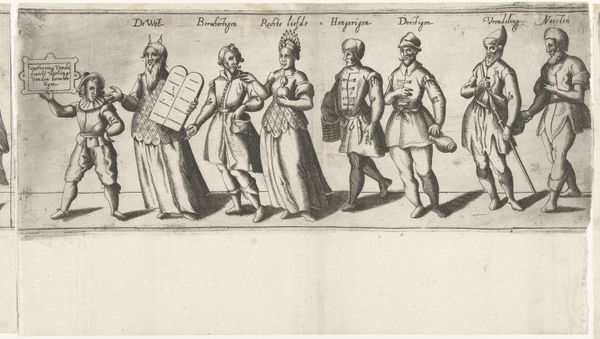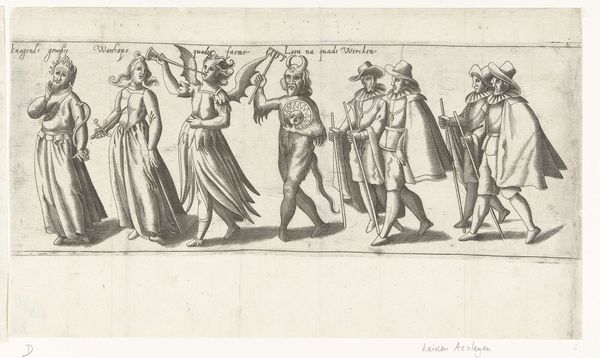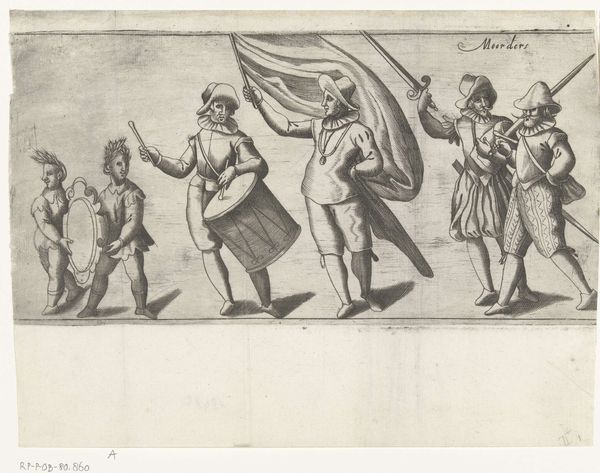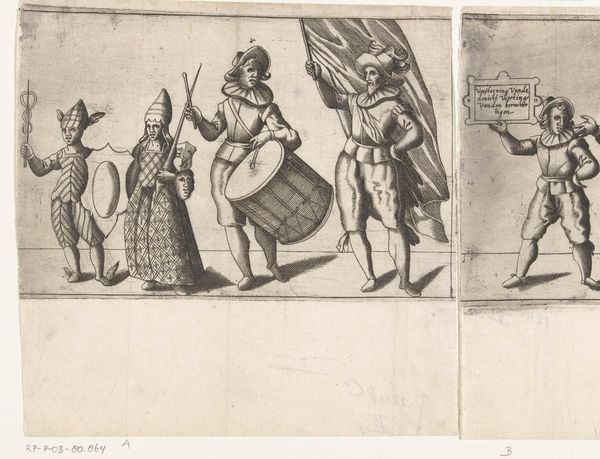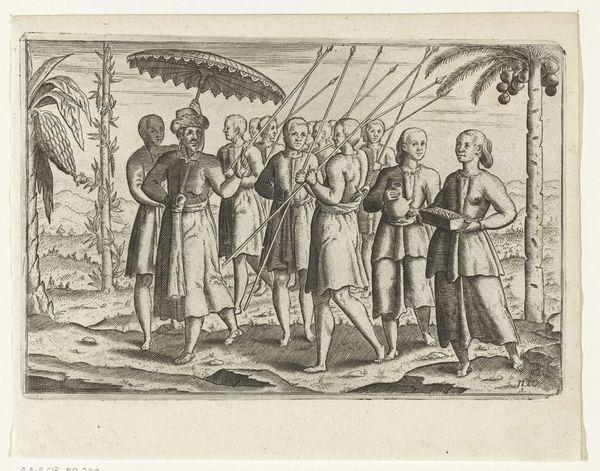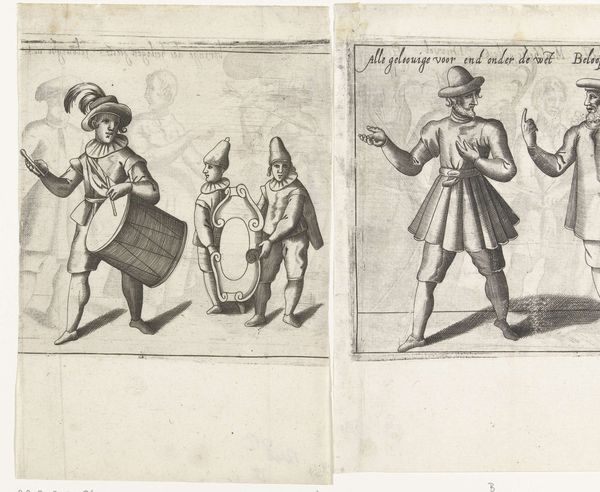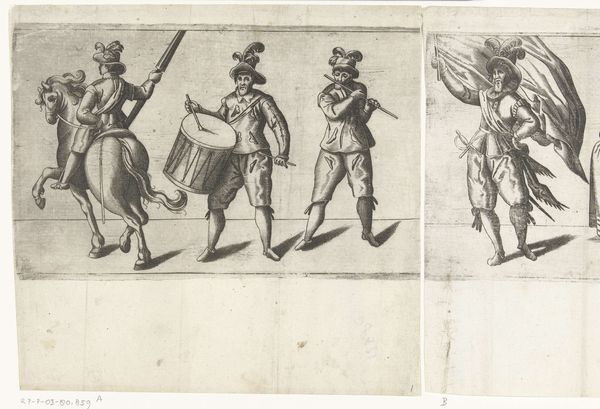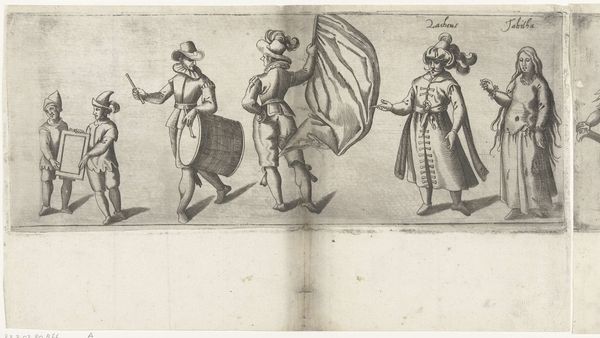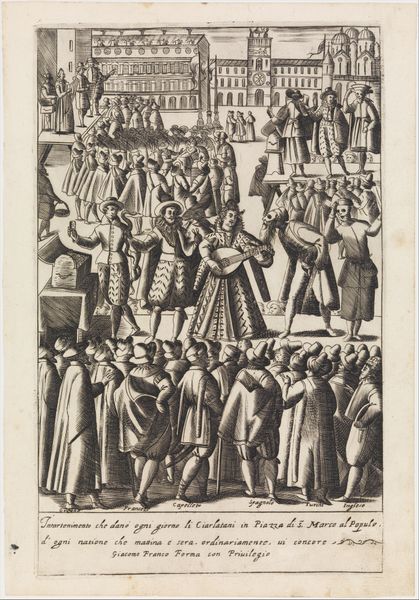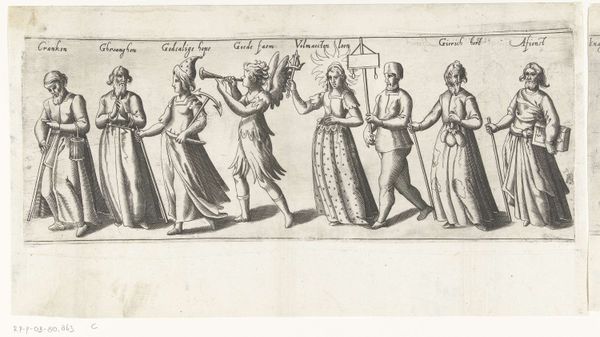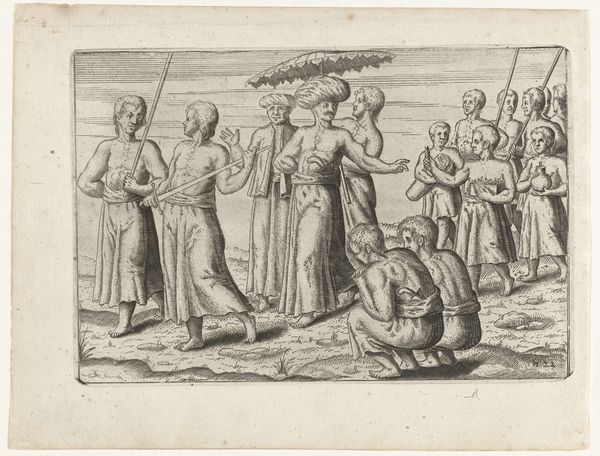
Optocht door de rederijkerskamer De Haselieren uit Hazerswoude Dorp (vierde deel), 1607 1607
0:00
0:00
anonymous
Rijksmuseum
print, engraving
#
narrative-art
# print
#
figuration
#
genre-painting
#
northern-renaissance
#
engraving
Dimensions: height 197 mm, width 324 mm
Copyright: Rijks Museum: Open Domain
This print was made in 1607 by an anonymous artist, likely in the Netherlands. It is an etching, a technique that employs acid to create lines in a metal plate, which then is inked and printed. The image displays a procession of figures, each carrying a branch, and it is the linear quality of etching that defines the scene. Notice how the cross-hatching creates tonal depth, giving form to the figures and their elaborate costumes. The sharpness of the lines also lends a crisp formality to the scene, befitting a formal procession. But consider too what the choice of etching represents. Unlike painting or sculpture, prints are reproducible. This speaks to a burgeoning media culture in the 17th century, as well as the increasing importance of civic identity. The print commemorates a specific group, the rhetoric society of Hazerswoude Dorp, suggesting the rising power of local organizations.
Comments
No comments
Be the first to comment and join the conversation on the ultimate creative platform.

